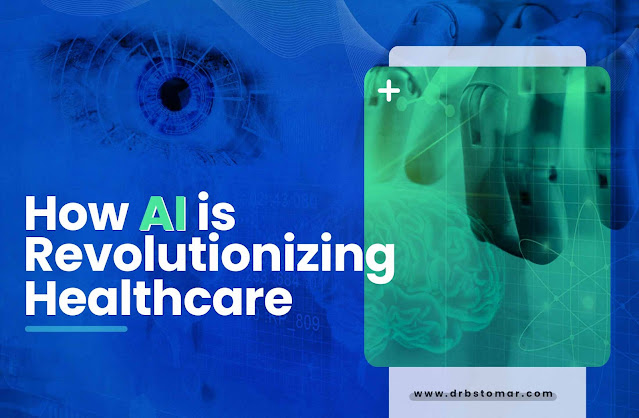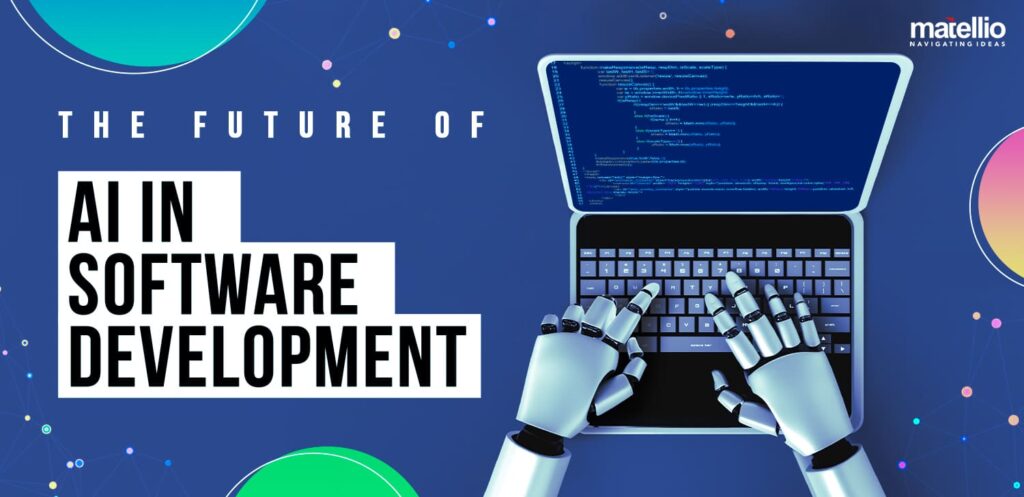
The rapid rise of AI in software development is revolutionizing. As AI tools become more sophisticated, they are transforming the way we build and maintain software. This shift promises greater efficiency, innovation, and growth in the tech industry.
AI enhances software development by automating coding, testing, and debugging. This allows developers to focus on solving complex problems and creating innovative solutions. According to Grand View Research, the global AI market is expected to grow by 36.6% annually from 2024 to 2030, highlighting its increasing impact.
While some fear AI will replace human jobs, it actually complements and enhances developer skills. AI enables developers to work on more challenging and creative projects by taking over repetitive tasks. Adopting AI is essential for tech leaders to remain competitive in a rapidly evolving digital landscape.
AI tools like ChatGPT have sparked discussions about the future of software development. Predictions vary, but one thing is clear: AI is set to drive extraordinary productivity and innovation. As AI integrates into software engineering, it will lead to faster, more efficient, and more resilient development processes.
Common Myths About AI
Let’s discuss some common myths about AI that are prevalent in our surroundings.
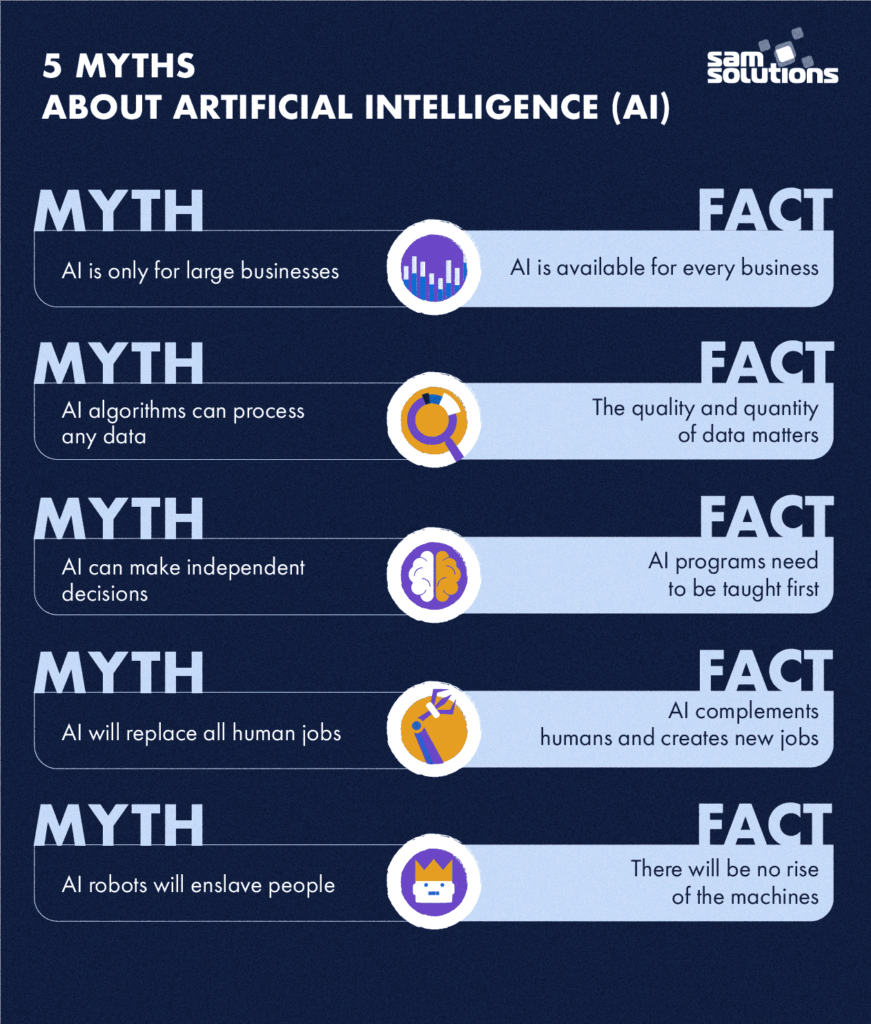
1. AI will replace all technical jobs
The myth that AI will replace all technical jobs is far from the truth. AI is a tool designed to help developers by automating repetitive tasks like code reviews, testing, and debugging. This allows developers to focus on more creative and meaningful work, resulting in faster development and better-quality software.
Moreover, AI requires human expertise, including data scientists, machine learning engineers, and software developers. Rather than eliminating jobs, AI is transforming the tech landscape, enhancing human capabilities, and creating new opportunities for innovation and growth.
2. Custom AI model training is exceedingly expensive and resource-intensive
New solutions are challenging the belief that training custom AI models is exceptionally expensive and resource-intensive. Traditional AI model training indeed requires a lot of data, computing power, and time, making it seem out of reach for many. However, pre-trained models offer a more accessible alternative. These models, already trained on vast datasets, can be fine-tuned for specific tasks, reducing the need for extensive resources.
Furthermore, cloud-based machine learning platforms are making AI more affordable. These platforms provide scalable infrastructure and pre-built tools, significantly cutting down the costs of training custom models. With these options, businesses can leverage AI technology without the heavy financial burden, opening up new opportunities for innovation and efficiency.
3. AI is merely a passing tech trend
The notion that AI is merely a passing tech trend is a misconception. Unlike fleeting technologies, AI is already revolutionizing numerous industries. From healthcare to finance, AI enables automation, enhances decision-making, and unlocks valuable insights from data. Its applications are growing rapidly, proving that AI is here to stay.
Moreover, AI isn’t just for tech experts; it offers opportunities across various fields. New roles like prompt engineers are emerging, emphasizing the importance of crafting effective AI prompts. Embracing AI can lead to significant advancements, making it essential for both individuals and businesses to stay informed and adapt.
4. AI is usable only by data science experts
Many people believe that AI is only usable by those with deep expertise in data science, which can seem daunting to newcomers. However, the reality is quite different. AI technology has become more accessible, thanks to pre-trained models that are already equipped to handle complex tasks like image recognition or language translation. These models are readily available through APIs, making it possible for anyone to integrate AI capabilities into their applications without needing to understand the intricacies of data science.
Additionally, AI-powered tools such as voice assistants and chatbots use natural language processing to interact with users effectively. These tools rely on pre-built AI models, allowing them to understand and respond to human speech without users needing any background in machine learning.
This accessibility means that AI is not just for experts; it’s becoming a tool that everyone can use to enhance their applications and processes. While having some basic knowledge of data science can be helpful, it’s not a requirement to benefit from AI’s capabilities and innovations in today’s tech landscape.
5. No code/low code AI platforms are limited to non-technical users
No code/low code AI platforms are breaking barriers by allowing both technical and non-technical users to harness the power of AI. These platforms enable anyone, regardless of their coding expertise, to create sophisticated applications such as chatbots and specialized search tools. Non-technical users can leverage visual interfaces and pre-built components to build functional applications, while technical users can fine-tune these applications and integrate them with existing systems.
Moreover, these platforms are beneficial even for technical users who prefer focusing on higher-level tasks rather than coding intricacies. For instance, data scientists can swiftly prototype machine learning models without delving into complex coding processes.
In essence, no code/low code platforms democratize AI, making advanced technology accessible to a broader audience and encouraging innovation across industries.
Summary – AI still needs a human touch
AI represents a revolutionary leap forward in technology, enhancing efficiency across various domains. Yet, its true potential emerges when combined with human insight and creativity. While AI excels at streamlining processes and generating insights, it lacks the delicate understanding and intuitive leaps that humans bring to the table.
For instance, in crafting this content, AI provided invaluable assistance in organizing thoughts and outlining content. However, it couldn’t add a unique viewpoint and compelling storytelling that connects with readers. Thus, the synergy between human ingenuity and AI’s capabilities remains pivotal, emphasizing humans’ collaborative role in harnessing AI’s full potential.
What tasks can be done by generative AI in software development?
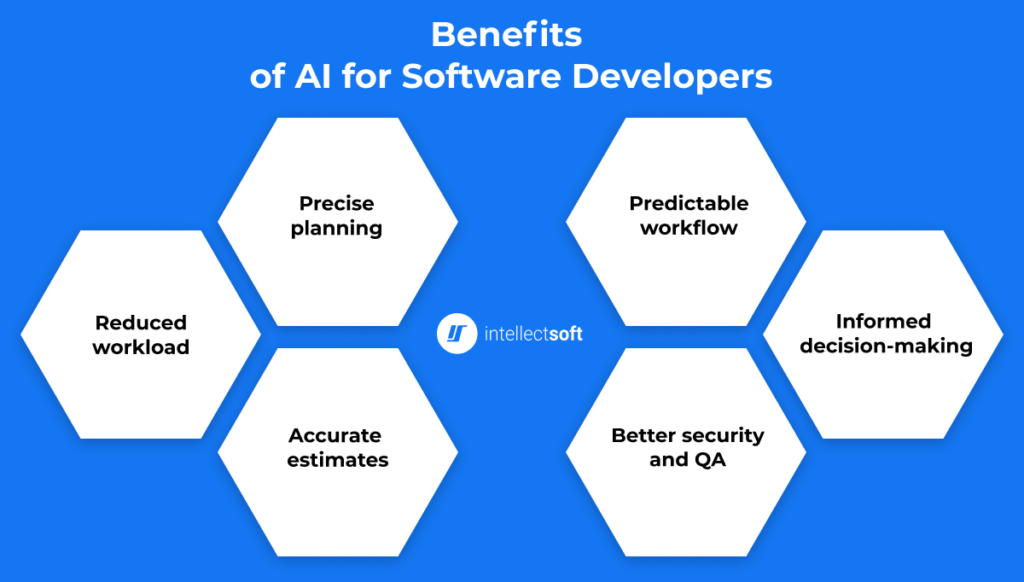
Generative AI technology is revolutionizing various tasks across industries, leveraging its capabilities to streamline processes and enhance productivity. Here’s how generative AI excels in performing key tasks:
1. Automation of Routine Tasks: Generative AI efficiently handles repetitive tasks that follow clear, procedural steps. This automation reduces the workload on human resources, allowing them to focus on more strategic and innovative endeavours.
2. Drafting Initial Code: AI can swiftly generate initial drafts of code, providing a starting point for developers facing creative blocks or complex coding challenges. This capability accelerates the development process and facilitates quicker iterations.
3. Updating and Refining Code: AI is adept at making small updates and enhancements to existing codebases. It can identify bugs, optimize code efficiency, and implement changes based on specific requirements, thereby improving overall software performance.
4. Enhancing Cycle Times: By offering rapid feedback and insightful analytics, generative AI aids in optimizing project timelines and enhancing decision-making processes. It supports businesses in aligning with their operational goals and achieving efficient project execution.
Generative AI continues to evolve, demonstrating its potential to augment human capabilities across diverse domains, from software development to business strategy and beyond.
Then, why do you need developers for:
Even after having such intelligible Gen AI tools like Github Copilot, Amazon CodeWishperer and more, human developers remain indispensable, complementing the capabilities of AI-driven tools. Here’s why every software development company needs skilled developers:
1. Handling Complexity: Human developers excel in managing intricate coding requirements that demand nuanced decision-making and problem-solving skills. Unlike AI, which thrives on specific prompts, developers can navigate multifaceted project demands while ensuring coherence and alignment with overarching goals.
2. Contextual Understanding: Developers bring a deep understanding of organizational contexts and preferences that AI may overlook. They tailor solutions to meet specific security protocols, performance benchmarks, and user experience standards, ensuring that software aligns seamlessly with organizational strategies and requirements.
3. Strategic Alignment: While AI excels within defined parameters, human developers contribute to broader strategic initiatives. They integrate technical expertise with strategic insights to design software that functions efficiently and supports long-term business objectives and market needs.
4. Adaptive Creativity: Developers possess creative adaptability, crucial for innovation and problem-solving in software development. They leverage their experience to innovate and optimize code, driving continuous improvement and adaptation in response to evolving technological landscapes.
Incorporating human developers alongside AI technologies enhances adaptability, creativity, and strategic alignment in software development, fostering robust solutions that meet diverse business challenges and propel organizational growth.
Top ways in which AI assists developers in software development
Discover how AI enhances software development with these top methods that streamline tasks and boost efficiency for developers.
1. Simplifying Code Summaries and Generating Documentation
AI significantly aids developers by simplifying code summaries and generating essential documentation. Instead of manually reviewing lengthy code sections, AI automates testing processes and condenses complex code into concise summaries. This approach boosts efficiency and improves code readability and maintenance.
Additionally, AI conducts A/B testing to compare different program versions and determine the best solution quickly. Automating these tests ensures comprehensive code coverage and speeds up issue resolution. AI-generated documentation further supports developers by providing insights into software functionality, aiding in troubleshooting, and enhancing overall project management and collaboration. This integration of AI into software development processes streamlines tasks enhances productivity and ensures higher quality software outputs.
2. Improving Efficiency in Coding Processes
AI significantly enhances coding efficiency by automating routine tasks and providing real-time support. These automated tools suggest lines of code, correct errors as they arise, and ensure adherence to coding standards. This assistance allows developers to concentrate on the creative aspects of coding, and making strategic decisions about program functionality while AI handles the implementation details.
Moreover, developers can learn and adapt faster, integrating new coding strategies seamlessly into their projects with AI’s continuous support and feedback mechanisms. This synergy between human creativity and AI automation accelerates project delivery and strengthens innovation in software development.
3. Planning Projects and Allocating Resources
AI plays a critical role in enhancing project planning and resource allocation in software development. By analyzing data from past projects and current resource usage, AI can provide valuable insights and recommendations for new initiatives. This helps teams prioritize projects that align with their capabilities and strategic goals while ensuring efficient use of resources and maximizing project success.
AI continues to be beneficial by predicting outcomes based on historical data. Automated platforms use this information to adjust project timelines, milestones, budgets, and resource plans in real time. This dynamic approach enables teams to adapt swiftly to changes, maintain effective workflows, and ensure that tasks are appropriately assigned throughout the project lifecycle.
In essence, AI empowers developers and project managers alike to make informed decisions, optimize project management processes, and achieve better overall outcomes in software development.
4. Detecting Bugs and Coding Errors
Detecting bugs and coding errors is significantly enhanced by AI in software development. Automated debugging tools are important in this regard, swiftly identifying and rectifying errors that might otherwise be time-consuming for developers to pinpoint manually. These tools utilize advanced algorithms to analyze code and databases, predicting potential issues before they manifest, thus preventing future errors.
While AI tools excel in automating the detection of common bugs and errors, they may not capture every intricate issue or align perfectly with specific organizational preferences. Nonetheless, their ability to expedite the debugging process and reduce manual effort is invaluable, saving developers considerable time and ensuring smoother software deployment and maintenance.
5. Addressing Skill Gaps
Addressing skill gaps in software development is revolutionized by AI, particularly through its capability in code generation. Traditionally, the experience needed to write code can create barriers for non-developers and less experienced team members. However, AI-powered code generation tools empower these individuals to contribute effectively to development projects.
This accessibility expands the pool of contributors and allows seasoned developers to focus on more intricate aspects of software engineering. By leveraging AI, teams can bridge skill gaps, enhance collaboration across departments, and strengthen a learning environment where all members can grow and contribute meaningfully to software development initiatives.
Mitigating AI Risks in Software Development: Strategies and Best Practices
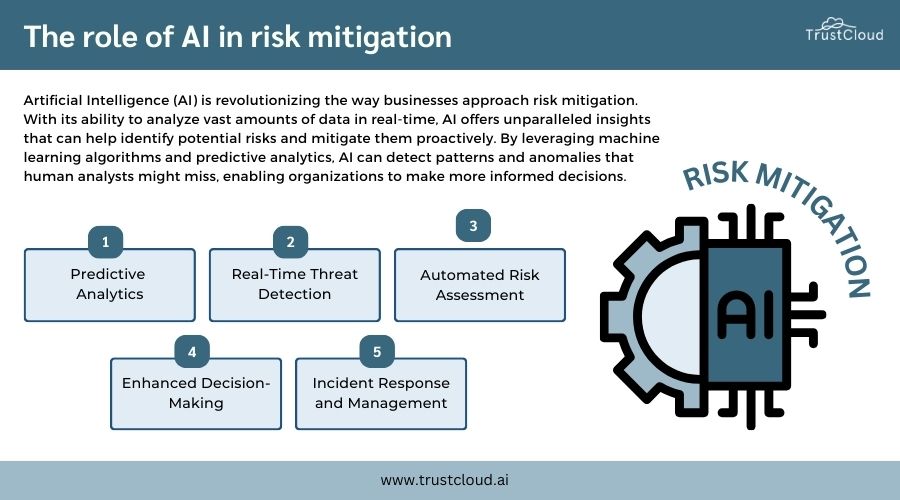
In today’s fast-paced software development landscape, integrating AI brings undeniable advantages but also introduces potential risks that must be carefully managed. While AI tools can streamline processes and enhance productivity, they are not without challenges:
Technology dependence: Over-reliance on AI tools can disrupt workflows if access is lost, impacting productivity and resource allocation.
SEO implications: AI-generated content may lack the human touch, affecting search engine rankings and user engagement.
Security vulnerabilities: AI-powered systems are susceptible to new data breaches and privacy issues, requiring robust security measures.
Software reliability: Despite its efficiency, AI-generated software may contain unseen errors or suboptimal processes.
To effectively harness AI’s benefits while mitigating these risks, organizations should adopt proactive strategies:
Research specific use cases: Tailor AI solutions to address specific business needs rather than adopting a generic approach.
Invest in risk management: Implement stringent security protocols and compliance measures to safeguard data and mitigate vulnerabilities.
Skill-oriented team restructuring: Adapt team structures to integrate AI capabilities effectively, ensuring human oversight for quality control.
Follow the link to delve deeper into the ethical considerations of generative AI and explore our comprehensive guide. This approach ensures that AI enhances operations while maintaining integrity and security across all facets of software development.

